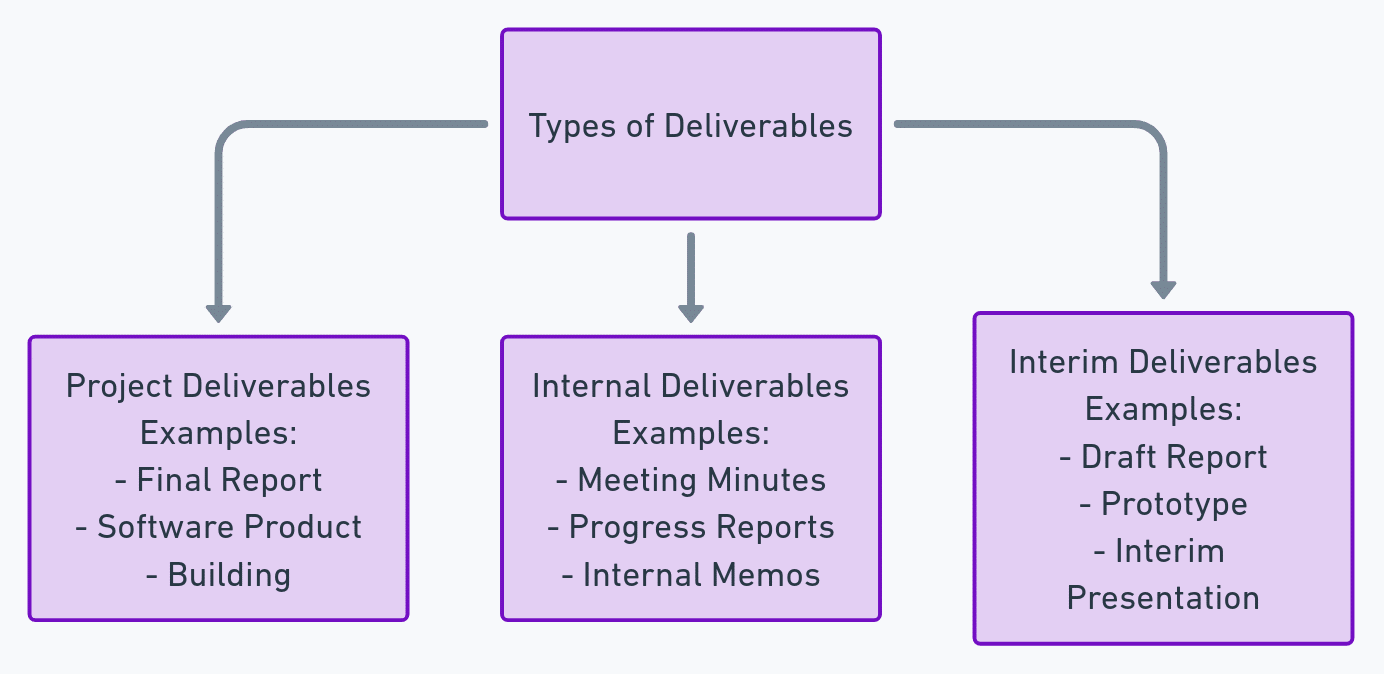In the world of project management, there’s a lot of jargon that gets thrown around. One term you’ll hear frequently is “deliverable.” But what exactly does that mean? In this article, we’ll break down what deliverables are, why they matter, and how to manage them effectively.
What is a Deliverable in Project Management?
A deliverable is any tangible or intangible product or service that is produced as part of a project. It’s a specific output that must be delivered to either an internal or external customer. Deliverables are the building blocks of a project, and collectively they form the overall outcome that the project aims to achieve.
Deliverables can be anything from a physical product to a document, report, software application, or even a service. They are often linked to project milestones, which are key points in the project timeline where significant progress is expected to have been made.
Related: What is Work Breakdown Structure (WBS) in Project Management
What are Examples of Project Deliverables?
Examples of project deliverables might include:
- A new website design
- A market research report
- A software application
- A training manual
- A constructed building
The specific deliverables will vary depending on the nature of the project and the industry.
What are Types of Deliverables in Project Management?
Deliverables can be categorized into three main types:
Project deliverables
These are the primary outputs of the project that are delivered to the client or end-user. They are the reason the project was initiated in the first place and directly contribute to achieving the project’s objectives.
Internal deliverables
These are deliverables that are produced for internal use by the project team. They might include things like status reports, meeting minutes, project plans, or design documents. While these deliverables are not delivered to the client, they are essential for the smooth running and management of the project.
Interim deliverables
These are deliverables that are produced at various stages of the project, but are not the final output. They serve as progress markers and help ensure the project is on track. Interim deliverables might be draft versions of final deliverables, or they could be separate outputs that are combined or built upon to create the final deliverable.

When are Deliverables in Project Management Agreed Upon?
Deliverables are typically defined and agreed upon during the project planning phase. This is when the project manager works with stakeholders to determine what outputs are required, when they need to be delivered, and what quality standards they must meet.
The deliverables are usually documented in the project scope statement and the project plan. The scope statement outlines at a high level what is and is not included in the project, while the project plan goes into more detail about each deliverable, including who is responsible for producing it, what resources are needed, and what the timeline is.
It’s important that all stakeholders agree on the deliverables before the project begins. This helps avoid scope creep (the gradual expansion of the project scope) and ensures everyone is working towards the same goals.
Related: What is Statement of Work (SOW) in Project Management?
What’s the Difference Between a Deliverable and an Objective?
While deliverables and objectives are related, they are not the same thing. An objective is a high-level goal or outcome that the project is aiming to achieve. Objectives are usually broader and more abstract than deliverables.
Deliverables, on the other hand, are the specific, tangible outputs that contribute to achieving the objectives. They are the means by which the objectives are met.
For example, if the objective of a project is to increase sales by 10%, a deliverable might be a new marketing campaign. The marketing campaign is a specific output that is intended to contribute to the higher-level objective of increasing sales.
Can Deliverables Change Over the Course of a Project?
While deliverables are usually defined during the planning phase, they can sometimes change over the course of a project. This might happen if there are changes to the project scope, timeline, or budget.
Changes to deliverables should not be made lightly, as they can have significant impacts on the project. Any proposed changes should be carefully evaluated to determine their necessity and feasibility. If changes are deemed necessary, they should be agreed upon by all relevant stakeholders and documented in the project plan.
It’s important to have a change control process in place to manage any changes to deliverables (or any other aspect of the project). This process should outline how change requests are submitted, evaluated, and approved or rejected.
Tips for Managing Project Deliverables
Here are a few tips for effectively managing project deliverables:
- Clearly define deliverables. Make sure everyone is on the same page about what is being delivered, when, and to what standard. Deliverables should be specific, measurable, achievable, relevant, and time-bound (SMART).
- Break down large deliverables. If a deliverable is very large or complex, break it down into smaller sub-deliverables that are more manageable. This makes the work more achievable and allows for progress to be tracked more easily.
- Set realistic deadlines. Work with your team to set achievable deadlines for each deliverable. Consider the resources available, the complexity of the work, and any external dependencies.
- Regularly review progress. Check in on the status of deliverables regularly to ensure they are on track. This can be done through status meetings, progress reports, or informal check-ins.
- Communicate with stakeholders. Keep stakeholders informed about the status of deliverables and any potential issues or delays. Regular communication helps manage expectations and allows for early identification and resolution of problems.
- Use project management tools. Tools like Gantt charts, task lists, and project management software can help you track and manage deliverables more effectively.
Project Deliverables in Ahsuite
Ahsuite is a client portal tool that offers a convenient way to manage project deliverables. In the Projects tool, you can create tasks to represent each deliverable and organize them into phases or milestones.
You can assign these tasks to team members, set due dates, and attach relevant files or documents. The progress of each deliverable can be tracked through the completion status of its associated task.
One of the key benefits of using Ahsuite for deliverable management is the ability to share the project with clients. This provides transparency and allows clients to see the status of deliverables at any time. Clients can also provide feedback or approval directly on the platform, streamlining communication.
Best of all you can manage your projects in Ahsuite for free!
Summary
Deliverables are the tangible or intangible products that a project produces. They are the building blocks of a project and collectively contribute to achieving the project’s objectives. Deliverables can be categorized as project deliverables (outputs to the client), internal deliverables (for the project team), or interim deliverables (progress markers).
Defining, agreeing upon, and managing deliverables is a critical part of project management. By clearly articulating what needs to be produced, setting realistic timelines, and regularly communicating progress, project managers can ensure that projects stay on track and meet their intended goals.
Tools like Ahsuite can assist in managing deliverables by providing a centralized platform for defining, assigning, tracking, and communicating about deliverables. This visibility and transparency is valuable for both the project team and the client.
In the end, successful management of deliverables is about more than just ticking off items on a checklist. It’s about ensuring that the project is delivering real value and meeting the needs of all stakeholders involved.

